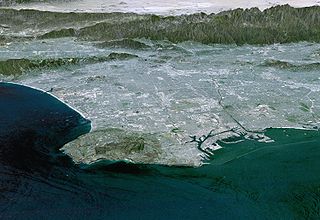It is no secret that California’s South Coast and San Joaquin Valley air basins are notorious for having some of this nation’s dirtiest and unhealthiest air. But, fret not, for there is renewed hope – in the Southland anyway. In that region, indications are air quality is improving.

On Sept. 29th, in “Air quality improvement at the Port of Long Beach: Yesterday, today and …” I was happy to report that “[d]iesel air pollution from ships, trucks, trains and other big machines at the Port of Long Beach has declined by 82 percent since 2005, a comprehensive air quality analysis has found.” (The above, as originally presented, was first published in: “Air Pollution Continues Decline at Port of Long Beach: 2013 marks 7 straight years of improved air quality,” a Port of Long Beach (POLB) news item).
Now comes exciting word air in the region on the whole is cleaner.
In an Oct. 2, 2014 news release, the South Coast Air Quality Management District (SCAQMD) expressed “SCAQMD’s Multiple Air Toxics Study IV (MATES IV) found that the average cancer risk from air pollution across the region declined from 1,194 in 1 million during MATES III in 2005 to 418 in 1 million in 2012-13 using similar methods of analysis. This risk reduction follows a trend of declining toxic emissions in the region since the first MATES study was conducted in 1987.”
Responsible for 68.2 percent of the regional cancer risk was diesel particulate matter emissions, mainly from “diesel trucks and other diesel-powered vehicles and equipment,” the SCAQMD found. Moreover, the air regulatory body found 90 percent of the risk to be from mobile sources; mobile sources that include cars, trucks, marine vessels (ships), railway locomotives, aircraft and equipment used in construction.
To bring greater perspective, “[t]he highest cancer risk, about 1,050 in 1 million was found in and around the ports of Los Angeles, the region’s hub of goods movement activity powered by ships, trucks and locomotives,” the SCAQMD noted. “Central Los Angeles and transportation corridors including freeways and rail lines also had some of the highest risks. The lowest cancer risks were found in central and south Orange County, southwest Riverside County and the Coachella Valley. Since MATES III, the greatest reductions in cancer risk have occurred in areas with the highest overall risk, including the ports.”
The air regulatory agency reminds interested persons that the improvement was not solely attributable to the recessionary economy, adding that between 2010 and 2013 the decline in toxic emissions was evidenced despite a jump in activity involving the handling of containers moving through the ports at both Long Beach and Los Angeles. In fact, throughout the region as a whole, emissions since 2005 have been cut by half.
The SCAQMD also made quite clear, “Toxic air pollutants are specific hazardous chemicals that are known or suspected to cause cancer or other serious health effects. Health effects from other pollutants including ozone and fine particulates (PM2.5) are not addressed in the MATES studies and are assessed in the agency’s Air Quality Management Plans.”
For more, see: “Major Air Toxics Study Shows Steep Decline in Cancer Risk to Southland Residents” here.
Image above: NASA
– Alan Kandel